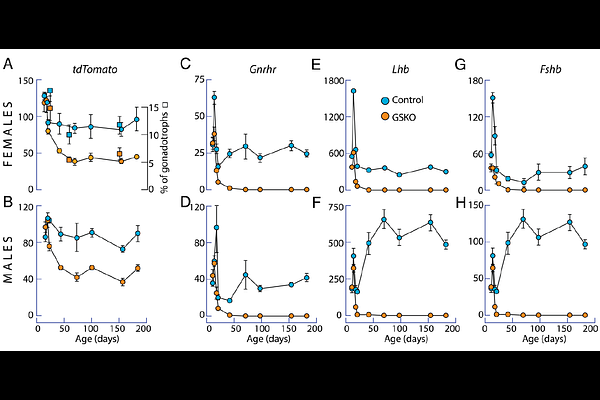Heterogeneity of Sox2-expressing cells in mouse pituitary and their roles in postnatal gonadotroph differentiation

Heterogeneity of Sox2-expressing cells in mouse pituitary and their roles in postnatal gonadotroph differentiation
Smiljanic, K.; Constantin, S.; Nessa, N.; Stojilkovic, S. S.
AbstractPostnatal differentiation of gonadotrophs from Sox2-expressing stem cells is essential for maturation of the hypothalamic-pituitary-gonadal axis, puberty, and reproduction. Here, we examined the differentiation and maintenance of gonadotrophs in developing and adult female mice. Gonadotrophs and Sox2-expressing cells were visualized by immunostaining, and gonadotrophs were also identified by specific expression of the fluorescent protein tdTomato during embryonic and postnatal development. Sox2-expressing cells are localized in the anterior parenchyma, marginal zone, and posterior pituitary, regardless of mouse age. Gonadotrophs are localized in the anterior parenchyma distinct from Sox2-expressing cells. During the juvenile and prepubertal periods, cells in transition from Sox2 expression to the tdTomato expression, as well as numerous differentiated gonadotrophs, were also present in the marginal zone. The size and distribution of newly differentiated gonadotrophs was consistent with their maturation and migration into parenchyma. Specific knockout of PI4 kinase A in gonadotrophs disrupted their postnatal differentiation in the marginal zone, causing a significant reduction in the size of the gonadotroph population. This was accompanied by a progressive loss of gonadotroph-specific gene/protein expression and an increase in the number of regressed tdTomato-expressing cells. Thus, cells expressing Sox2 in the marginal zone, but not in the parenchyma, serve as stem cells for postnatal gonadotrophs, and the differentiation and maintenance of these cells require PI4 kinase A-derived phosphoinositides.